Five Ways to Improve Crochet Tension
Tension can be one of the hardest elements of crochet to master. If your tension is too tight, your projects curl or become knotted messes; if your tension is too loose, there are large openings all over the project, which isn’t ideal for garments or amigurumi.
I struggled with tension the most when I began crocheting and over the years I have learned many tips and tricks to mastering tension. Keep in mind that everyone crochets with a different tension, so everyone’s finished works come out slightly different but it is completely normal! If you struggle with extremes in you tension (either too loose or too tight) then you have found the right place!
From this...
Or this...
To this!

1. If your tension is too loose - adjust your grip or use a smaller hook
If your work looks like the swatch on the far left, your tension is too loose. Do your pieces have large gaps and stretch too much? Are all of your clothes see through and amigurumi have large gaps where the stuffing comes through? Look no further!
One way to tighten up your tension is to adjust your grip on the yarn leading into the hook. I am right handed and therefore I hold my crochet hook in my right hand, and the yarn leading to the crochet hook is in my left hand. My left hand keeps the yarn taught so I can crochet with correct tension. Let me describe exactly how I do that:
First I lay the yarn over my left pinky, then pull it between my pinky and ring finger. The yarn runs under my hand, past my pointer finger, then over my pointer finger and pulled between my pointer and middle finger. Next, I hold my work pinched between my middle finger and thumb for stabilization.
This grip allows the yarn to maintain the perfect tension as I crochet down each row.
If this does not work for you, I would suggest using a smaller hook size than the recommended for the yarn you are using. This should help to bring your stitches closer together as well as correct your gauge.
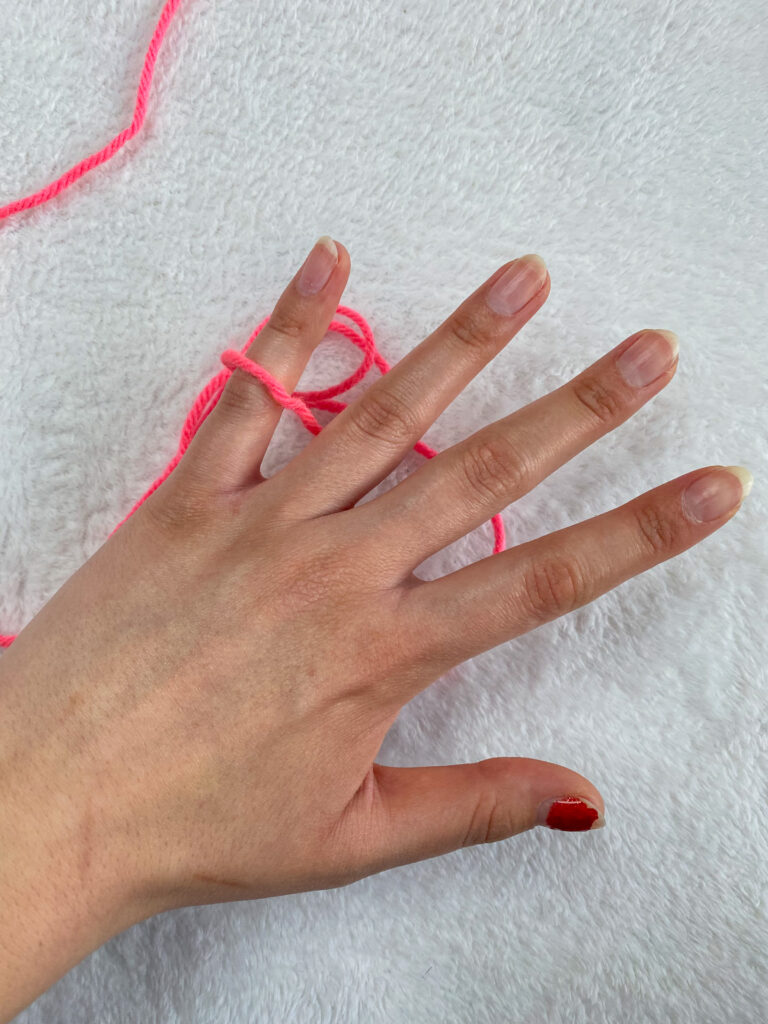
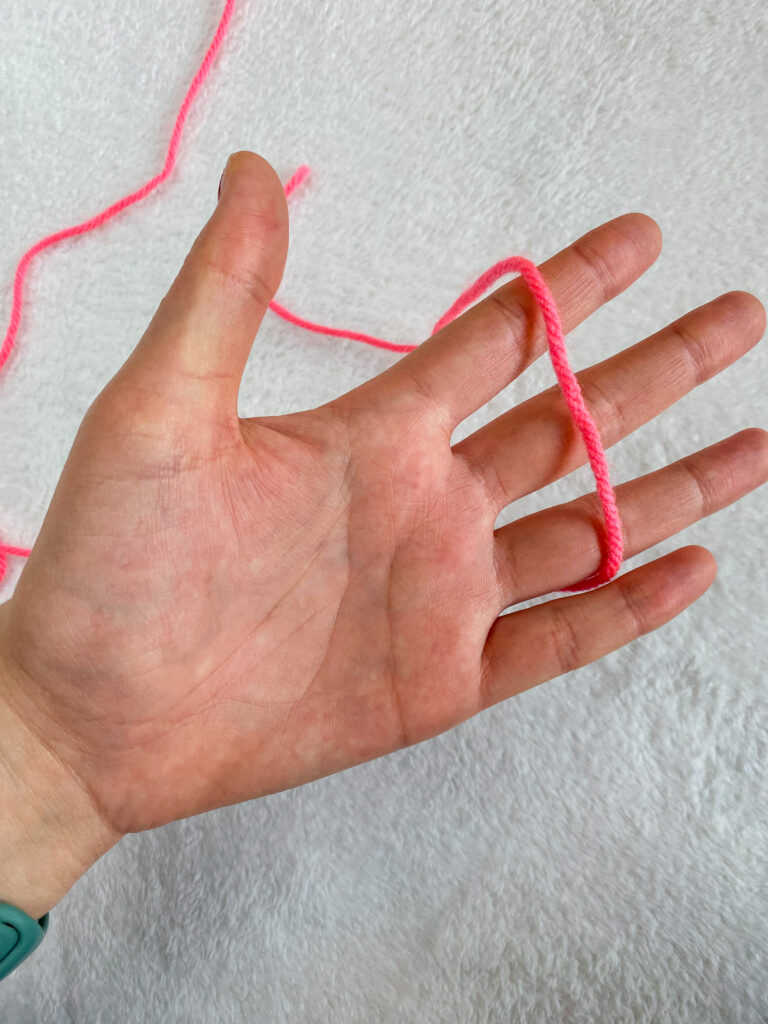
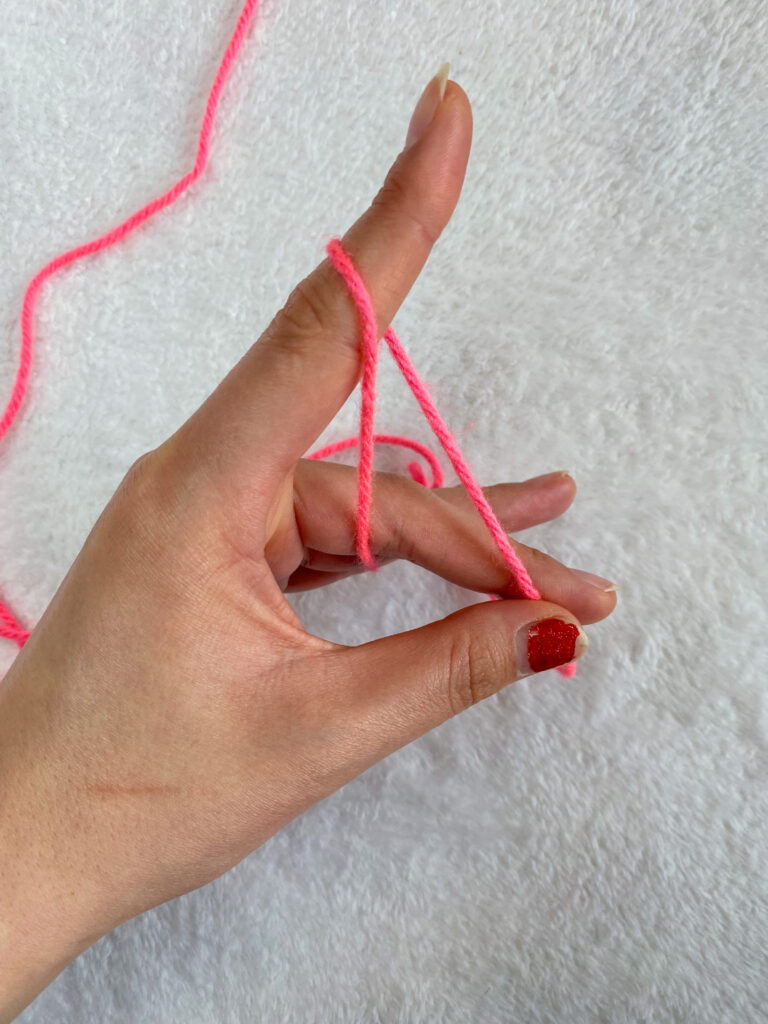
2. If your tension is too tight - use a larger hook size
If your work looks like the middle swatch, your tension is too tight. Does the yarn you use squeak as you crochet? Is it hard to pull the hook through the loops on your hook? Well this tip is for you!
I struggled with tension for months before I figured out how to correct my tension. Many things contribute to tension problems, such as how you hold your yarn and hook, and how you move your hook. In the beginning of my crochet journey, I used my fingers to push the loops off of the hook, contributing to the knotted messes I used to make. If you are crocheting correctly, your fingers should not touch the shaft of the hook at all. Comment below if you would like me to make a blog pot or YouTube tutorial on the correct movement of a crochet hook!
Discovering your hook grip and movement will take time and practice. In the mean time, using a hook 1 size (or more is your work is extremely tight) larger than recommended by the yarn being used will help. Using a larger hook will help you to complete projects, gain confidence, and motivate you to crochet more; as we know, practice = improvement.
Before using a larger hook size:
the edges are curling and the stitch height is very small
After using a larger hook size:
the piece lays flat because there is no curling and the stitch height is a more less cramped

3. Check how tightly (or loosely) the yarn hugs the hook
When crocheting, the hook should slide easily up and down the shaft of the hook with little resistance. If excessive force is needed to move the yarn up and down the hook, your tension is too tight. If the loop on your hook falls down the shaft and stays there, your tension is too loose.
The yarn should snuggly hug the shaft of the hook when the loop on the hook is at the largest diameter of the hook. The hook tapers as the shaft meets the hook so the yarn loop on the hook will be looser as you approach the hook. The hook should easily slide though the yarn loop with minimal effort.
Yarn is too tight on the hook:
The slip knot is tight against the shaft of the hook, making it look smaller than it should be
Yarn is too loose on the hook:
The slip knot is far away from the shaft of the hook
Yarn is the correct tension on the hook:
The slip knot it right against the shaft of the hook, it is not compressed but also not too far away
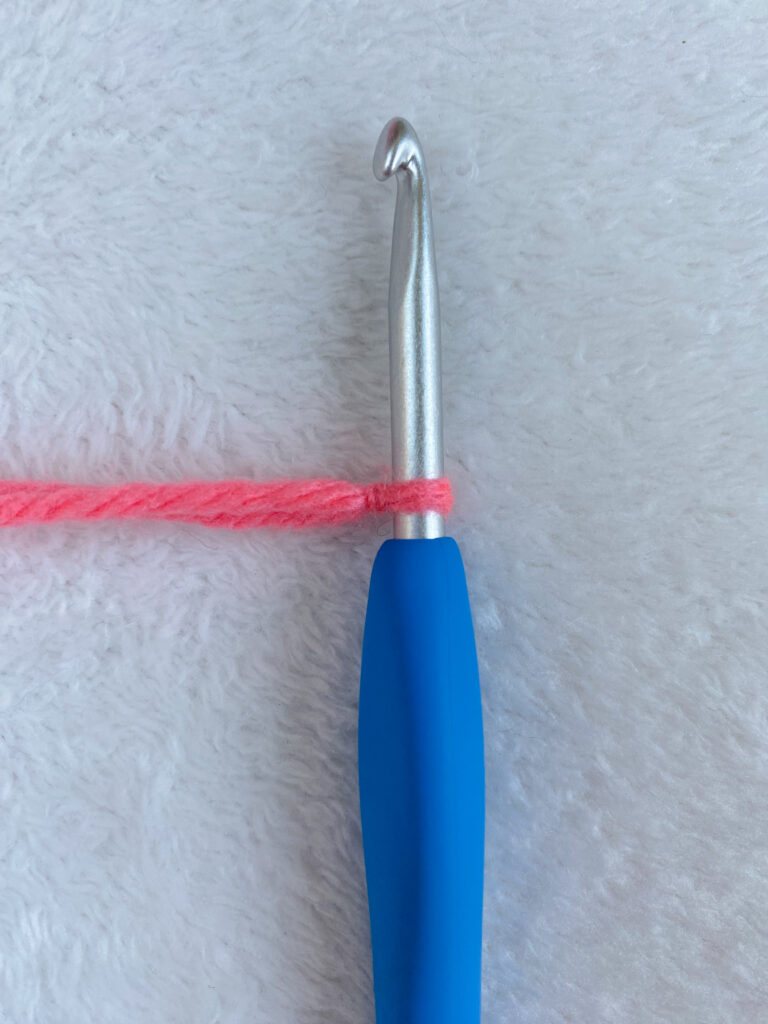
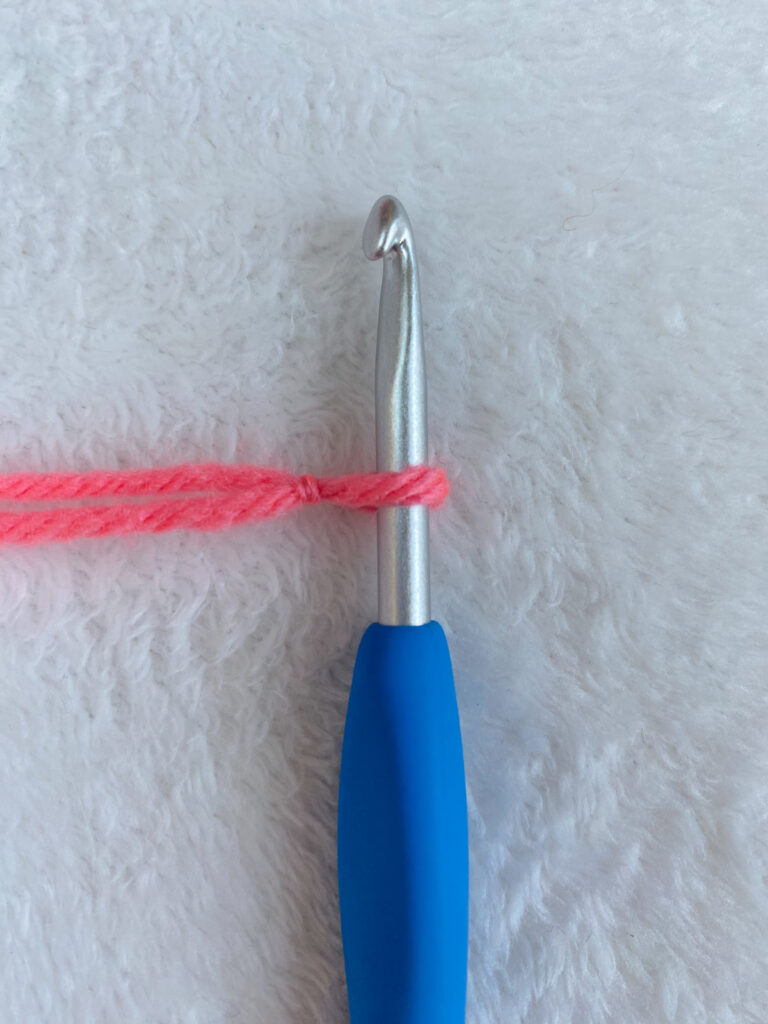
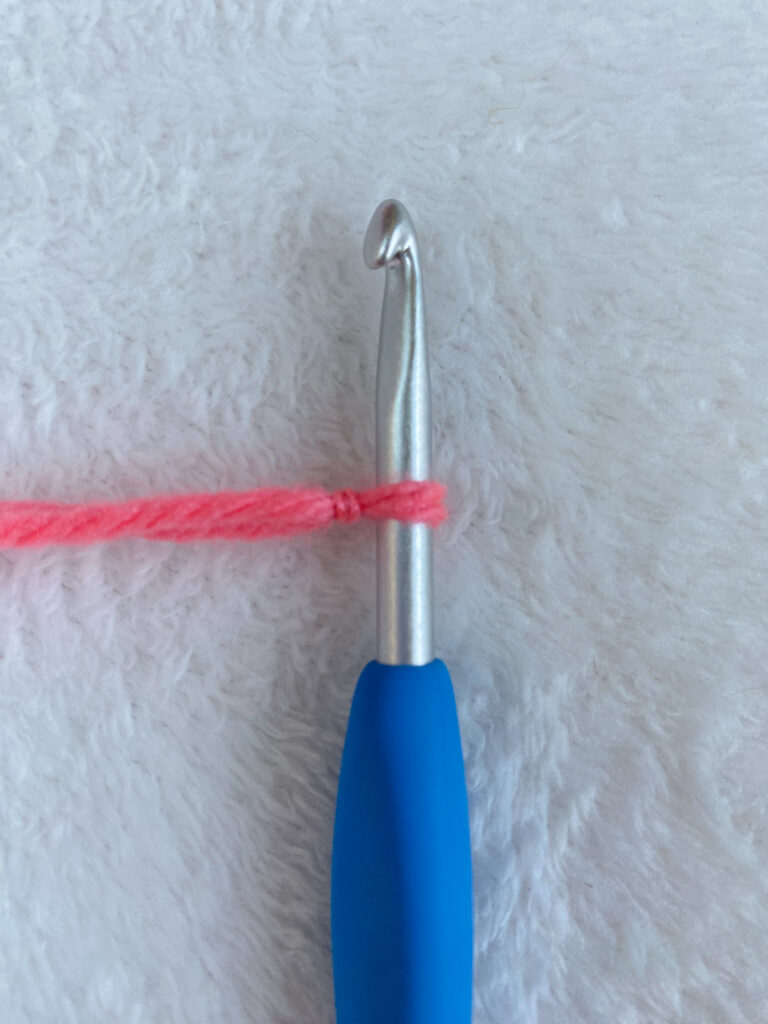
4. Take your time - speed will develop with time
Just as the title says, take your time! A coach of mine growing up always said that proper technique is learned when going slow and repeating the proper technique, focusing on every movement. Set aside some time to crochet without distractions and focus on the movement of your hook, how tight you are holding the yarn, is the yarn gliding over the hook with ease? Is the yarn strangling your hook or just snug?
To me crochet and mindfulness go hand in hand. I love carving time out of my day to do something I enjoy that I can devote all of my attention and brain power to. I find it very therapeutic and rewarding to make something with only yarn, one tool and my hands.
Once the technique and feel of correct tension is mastered going slow, you can begin to build speed until you are crocheting projects in a matter of hours!
5. Try upgrading your hook
When most people begin crocheting, they begin with the thin, multicolored aluminum hooks that come in a large pack of different sizes. If you are still struggling with your tension after adjusting your grip on the yarn, using different hook sizes for the same yarn and monitoring how tightly the yarn is on your hook, you can try upgrading hooks . This is the last item on the list because upgraded hooks are expensive and I wouldn’t recommend upgrading unless you plan on crocheting long term because of the price tag.
There are several factors to consider when upgrading such as your budget, the material of the hook and whether or not you want an ergonomic handle. Based on your personal needs and wants, some research is required when making your choice.
My favorite hooks are the Clover Armor Hooks because they have an ergonomic handle and a stainless steel hook that allows the yarn to glide over and off of it very well. I have yet to find a hook that I like better however, I admit I have not tried a lot of hooks as purchasing many different brands can be pricey. Along with Clover Armor, there are several other nice hooks on the market with great reviews such as the Tulip Etimo hooks, the Boye Ergonomic hooks, and many others.
Overall, upgrading crochet hooks is a personal choice with a lot of factors to consider! I continue to use my aluminum hooks from time to time and I still love them. No matter which hooks you choose to use, with practice, your crocheted pieces will turn out beautifully.
In conclusion, crochet is a skill that develops over time with lots of practice. Tension problems can be frustrating and discouraging but I hope that something listed above helps you out! If you have any specific questions about tension or other issues you are having with crochet, you can contact me via the “Contact Me” page above, TikTok or Instagram. I am @crochetwithkathryn on all platforms 🙂
Happy Crocheting!
